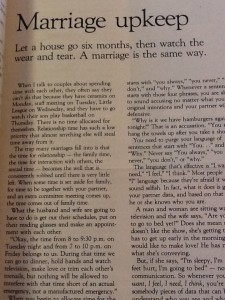“It is a peculiar sensation, this double-consciousness, this sense of always looking at one’s self through the eyes of others, of measuring one’s soul by the tape of a world that looks on in amused contempt and pity. The Negro ever feels his two-ness—an American, a Negro; two souls, two thoughts, two unreconciled strivings . . . two warring ideals in one dark body, whose dogged strength alone keeps it from being torn asunder.” -W.E.B. Dubois, The Souls of Black Folk
In reading the article about Yun Ch’i-ho, I was immediately reminded of this statement by WEB Dubois and his concept of double consciousness, or the juggling dual states of awareness. By this Dubois meant that the minority must be always aware of their being seen, and so is himself not free to evolve and explore the world around him as pure being. For those who’ve had the luxury of considering others’ reality when convenient, this is an easy concept to shirk off. Yet this effect has implications that go much deeper than head games or personal anxiety.
Dubois used “double consciousness” in the reference to the reality of being Black in America and of being “the other” in a society that chooses, and forces us to choose, sides. But the article on Yun throws into relief the universality of the concept, suggesting that such universality could lie with being “the other,” no matter how or where it occurs. According to Bubois, the double-consciousness:
“yields him no true self-consciousness, but only lets him see himself through the revelation of the other world…” -W.E.B. Dubois, The Souls of Black Folk
In diverse populations there will always be fault lines along which some can dominate, while the rest are marginalized, made into an other. When this happens, “the other” is asked to simultaneously be themselves and yet identify that self as the other, out of necessity than preference. This alone is counterintuitive… “How can I at one time be here, myself, me, yet at the same time be there, one of those, with the others?” The presence alone of a perceptual hegemon means that self-identity is not even free to unfold in its own vacuum of awareness. Except when around each other, “the others” find that they can at no time be themselves…even their “self” is an identity that must be constructed in response to, and in the context of, another.
So one is not free to realize his truest self when he must forever see around his own projection. But this is important because our reality is not shaped by our perceptions in only an existential sense. Perception finds its form in our laws, our television shows, the music on the radio, and even the slang we use. All are the result of some perceptual hegemon, and our adherence or response to it. Whomever’s perceptions have primacy in the. So there is an inherent bondage to being the perceived other that “the other” is powerless to shed. Entangled within the web of dual awareness and the reality of then-era social expectations, Yun was not even free to pursue a love interest. Therein is a biggest travesty of walking around with a double-consicous: the other not only percieves the present with it, but also surveys their aspirations and prospects for the future based on the presence of the seer and the unseen.
This is not the type of trap that is attached to an era and goes away. Today’s others–gays, transexuals, women, immigrants–have their own version of the double-counscious to wield, just as Yun did so long ago. It exists whenever and wherever the ingredients are present: a diverse community; a normative hegemon within the diversity. Yun’s story just confirms to me that though this was a thing of the past, it is a part of Emory’s present because it is a part of America’s present.




